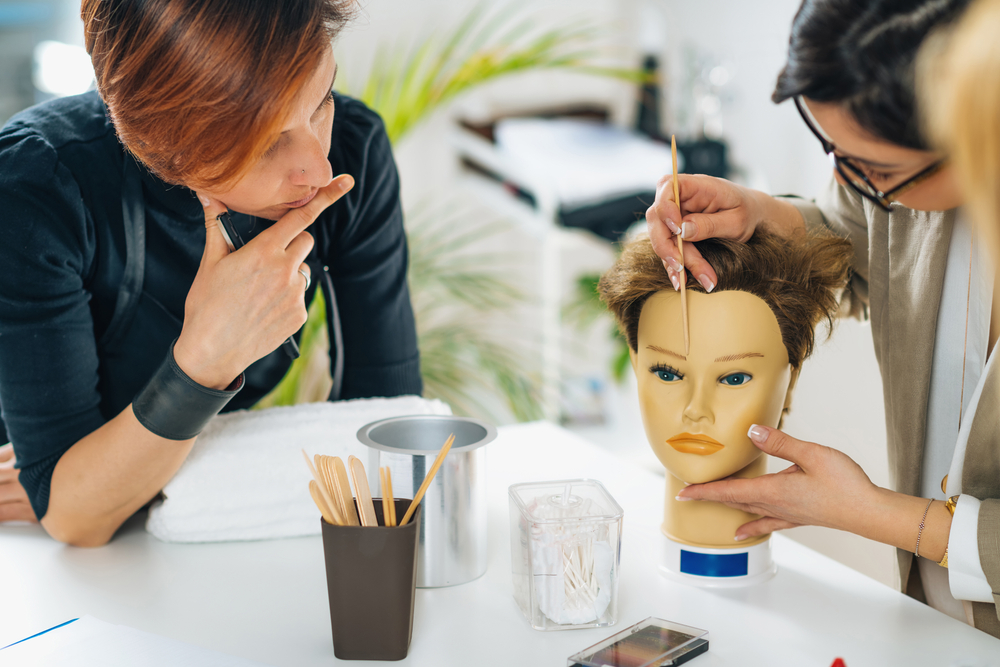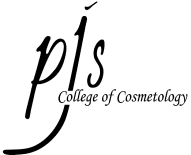September 16, 2025
Professional Makeup Artistry: Complete Guide to Building a Successful Makeup Career

Professional Makeup Artistry Career Guide: From Training to Success
Professional makeup artistry represents one of the most creative and versatile careers in the beauty industry, offering opportunities in entertainment, fashion, bridal services, and retail environments. This comprehensive guide covers the skills, training, business strategies, and industry knowledge needed to build a successful makeup artistry career in today’s competitive market.
Understanding the Professional Makeup Industry
Career Paths in Makeup Artistry
Bridal and Special Event Makeup:
- Wedding Industry Focus: Specializing in bridal parties and wedding day makeup
- Special Occasions: Proms, graduations, anniversary celebrations, and parties
- Corporate Events: Professional makeup for business functions and photography
- Holiday and Seasonal: Makeup services for seasonal celebrations and themed events
Fashion and Editorial Makeup:
- Fashion Week Work: Runway shows and backstage makeup artistry
- Magazine Editorials: Creative makeup for fashion and beauty photography
- Advertising Campaigns: Commercial makeup for product advertisements
- Catalog Work: Clean, commercial makeup for retail photography
Entertainment Industry Makeup:
- Film and Television: On-set makeup for actors and performers
- Theater Makeup: Stage makeup requiring different techniques for live performance
- Music Industry: Makeup for music videos, concerts, and promotional events
- Celebrity Makeup: Personal makeup artist services for high-profile clients
Retail and Education Makeup:
- Department Store Counters: Brand-specific makeup consultation and sales
- Freelance Lessons: Teaching makeup application to individual clients
- Group Workshops: Educational makeup classes and seminars
- Online Education: Digital makeup tutorials and virtual consultations
Essential Makeup Artistry Skills
Technical Foundation Skills
Color Theory in Makeup:
- Undertone Assessment: Identifying warm, cool, and neutral undertones in skin
- Color Correction: Using complementary colors to neutralize skin imperfections
- Color Harmony: Creating balanced, aesthetically pleasing color combinations
- Seasonal Color Analysis: Understanding how different colors complement various skin tones
Face Shape Analysis and Contouring:
- Facial Structure Assessment: Identifying bone structure and proportions
- Contouring Techniques: Using light and shadow to enhance natural features
- Highlighting Strategies: Strategic placement to create dimension and glow
- Corrective Techniques: Minimizing less favorable features while enhancing assets
Eye Makeup Mastery:
- Eye Shape Analysis: Identifying different eye shapes and appropriate techniques
- Eyeshadow Application: Blending techniques for seamless color transitions
- Eyeliner Variations: Different liner styles for various eye shapes and occasions
- False Lash Application: Professional techniques for natural and dramatic looks
Advanced Application Techniques
Airbrush Makeup Artistry:
- Equipment Mastery: Understanding compressors, guns, and cleaning procedures
- Foundation Application: Creating flawless, long-lasting base coverage
- Color Mixing: Custom color creation for perfect skin tone matches
- Specialty Applications: Body painting, temporary tattoos, and special effects
Special Effects Makeup:
- Prosthetic Application: Using foam latex and silicone pieces
- Aging Techniques: Creating realistic aging effects with makeup and prosthetics
- Wound and Injury Simulation: Medical training and film applications
- Fantasy and Creature Makeup: Creative character transformation techniques
HD and Photography Makeup:
- Camera-Ready Techniques: Makeup that translates well on camera
- Lighting Considerations: Understanding how different lighting affects makeup appearance
- Product Selection: Choosing products that don’t create flashback or color distortion
- Detail Perfection: Precision application for close-up and high-definition cameras
Product Knowledge and Selection
Professional Makeup Product Categories
Base Makeup Products:
- Foundation Types: Liquid, cream, powder, and stick formulations
- Coverage Levels: Sheer, medium, and full coverage options
- Finish Options: Matte, satin, dewy, and natural finish foundations
- Specialized Bases: Color-correcting primers, mattifying primers, and illuminating bases
Color Cosmetics:
- Eyeshadow Formulations: Powder, cream, liquid, and stick eyeshadows
- Lipstick Categories: Matte, glossy, long-wearing, and tinted options
- Blush and Bronzer: Powder, cream, and liquid formulations
- Specialty Products: Highlighters, color correctors, and setting products
Professional Tool Selection:
- Brush Quality: Natural vs. synthetic bristles for different applications
- Brush Shapes: Understanding specific uses for different brush shapes
- Sponge Applications: Beauty sponges for seamless blending
- Specialty Tools: Eyelash curlers, tweezers, and precision applicators
Kit Building and Organization
Professional Kit Essentials:
- Color Range: Comprehensive selection covering diverse skin tones
- Product Variety: Multiple formulations for different skin types and occasions
- Sanitation Supplies: Alcohol, disposable applicators, and cleaning materials
- Application Tools: Professional-quality brushes and application implements
Kit Organization Systems:
- Modular Storage: Organized compartments for easy product access
- Travel Considerations: Portable options for on-location work
- Inventory Management: Tracking product usage and replacement needs
- Client Safety: Single-use items and sanitation protocols
Client Consultation and Communication
Professional Consultation Process
Initial Client Assessment:
- Skin Analysis: Evaluating skin type, tone, and any specific concerns
- Lifestyle Consideration: Understanding daily routine and maintenance preferences
- Occasion Planning: Determining appropriate makeup style for specific events
- Budget Discussion: Establishing investment level for products and services
- Expectation Setting: Managing realistic outcomes and timeline discussions
Communication Strategies:
- Active Listening: Understanding client needs and preferences
- Visual Communication: Using images and examples to clarify desired looks
- Education Focus: Teaching clients about products and application techniques
- Professional Boundaries: Maintaining appropriate client-artist relationships
Trial Run and Testing Procedures
Bridal Trial Importance:
- Look Development: Creating and refining the perfect wedding day look
- Product Testing: Ensuring longevity and photography compatibility
- Timing Assessment: Determining accurate application timeframes
- Modification Opportunities: Making adjustments based on client feedback
Skin Testing Protocols:
- Allergy Prevention: Testing products on sensitive clients
- Product Compatibility: Ensuring products work well together
- Longevity Testing: Assessing wear time and touch-up needs
- Photography Testing: Checking how makeup appears in photos
Business Development and Marketing
Building Your Makeup Artistry Business
Portfolio Development:
- Diverse Work Showcase: Displaying range of styles and techniques
- Professional Photography: High-quality images showcasing your work
- Before and After Documentation: Demonstrating transformation skills
- Client Testimonials: Including satisfied client feedback and reviews
Pricing Strategies:
- Service-Based Pricing: Rates for different types of makeup applications
- Travel Fees: Additional charges for on-location services
- Group Discounts: Pricing for bridal parties and multiple clients
- Package Deals: Combining services for comprehensive beauty solutions
Marketing and Client Acquisition
Social Media Marketing:
- Instagram Presence: Visual platform perfect for makeup artistry showcase
- TikTok Content: Short-form video content demonstrating techniques
- Facebook Marketing: Local community engagement and event promotion
- LinkedIn Networking: Professional connections and industry relationships
Traditional Marketing Methods:
- Bridal Show Participation: Direct access to target clientele
- Vendor Partnerships: Relationships with photographers, planners, and venues
- Referral Programs: Incentives for client referrals and word-of-mouth marketing
- Print Advertising: Local magazines and bridal publications
Industry Networking and Professional Development
Building Professional Relationships
Industry Connections:
- Photographer Collaborations: Building relationships for fashion and portrait work
- Wedding Vendor Networks: Partnerships with planners, florists, and venues
- Model Relationships: Working with models for portfolio development
- Mentor Relationships: Learning from established makeup artists
Continuing Education Opportunities:
- Manufacturer Training: Brand-specific education and certification programs
- Workshop Attendance: Advanced technique workshops and masterclasses
- Trade Show Participation: Industry events for networking and education
- Online Learning: Digital courses and virtual training opportunities
Professional Certifications and Credentials
Industry Certifications:
- Makeup Artist Certification: Professional credentials from recognized schools
- Specialized Training: Certifications in airbrush, special effects, or medical makeup
- Brand Certifications: Training from specific cosmetic companies
- Continuing Education: Ongoing learning to maintain and improve skills
Technology and Innovation in Makeup Artistry
Digital Tools and Applications
Makeup Apps and Software:
- Virtual Try-On: Digital makeup application for client consultations
- Color Matching: Apps that help identify perfect foundation shades
- Tutorial Creation: Tools for creating educational content
- Business Management: Apps for scheduling, invoicing, and client management
Online Education and Tutorials:
- Platform Creation: Building your own educational content platform
- Live Streaming: Real-time makeup applications and Q&A sessions
- Course Development: Creating comprehensive online makeup education
- Virtual Consultations: Remote makeup consultations and training
Emerging Technologies:
- AR Makeup Filters: Augmented reality for virtual makeup trials
- AI Color Matching: Artificial intelligence for precise shade selection
- Smart Mirrors: Interactive mirrors for makeup application guidance
- 3D Printing: Custom prosthetics and makeup tools
Health, Safety, and Sanitation
Professional Sanitation Standards
Tool Sanitization:
- Brush Cleaning: Proper cleaning and disinfection between clients
- Disposable Items: Single-use applicators and sponges for hygiene
- Product Dispensing: Sanitary methods for removing products from containers
- Work Surface Cleaning: Maintaining clean application areas
Client Safety Protocols:
- Allergy Screening: Identifying potential allergic reactions before application
- Eye Safety: Proper techniques around delicate eye area
- Skin Sensitivity: Recognizing and accommodating sensitive skin conditions
- Infection Prevention: Avoiding cross-contamination between clients
Professional Insurance and Liability
Business Protection:
- Liability Insurance: Coverage for potential client injury or allergic reactions
- Product Insurance: Protection against product-related issues
- Equipment Coverage: Insurance for professional tools and supplies
- Professional Indemnity: Coverage for professional advice and services
Financial Management and Business Growth
Revenue Streams and Diversification
Multiple Income Sources:
- Direct Services: Individual makeup applications and consultations
- Group Services: Bridal parties, special events, and workshops
- Product Sales: Retailing professional makeup products to clients
- Education Income: Teaching makeup classes and private lessons
Passive Income Opportunities:
- Online Courses: Digital education products and tutorials
- Affiliate Marketing: Commission from product recommendations
- Sponsored Content: Brand partnerships and social media sponsorships
- Subscription Services: Monthly makeup boxes or tutorial subscriptions
Financial Planning and Growth
Business Expense Management:
- Product Investment: Budgeting for professional makeup inventory
- Equipment Costs: Investing in quality tools and storage solutions
- Education Expenses: Ongoing training and skill development costs
- Marketing Budget: Allocation for advertising and promotional activities
Scaling Your Business:
- Team Building: Hiring additional makeup artists for larger events
- Location Expansion: Serving broader geographic areas
- Service Diversification: Adding complementary services like hair styling
- Franchise Opportunities: Licensing your brand and methods to others
Specialization Areas and Niche Markets
Medical and Corrective Makeup
Paramedical Makeup:
- Scar Coverage: Techniques for covering surgical scars and injuries
- Vitiligo Coverage: Specialized makeup for pigmentation disorders
- Post-Cancer Care: Makeup services for chemotherapy and radiation patients
- Prosthetic Integration: Blending makeup with medical prosthetics
Aging and Mature Client Services:
- Age-Appropriate Techniques: Makeup methods for mature skin
- Vision Accommodation: Working with clients who have vision challenges
- Skin Changes: Understanding how aging affects makeup application
- Confidence Building: Helping mature clients feel beautiful and confident
Cultural and Ethnic Specialization
Diverse Beauty Understanding:
- Skin Tone Expertise: Working with wide range of skin tones and undertones
- Cultural Sensitivity: Understanding different beauty traditions and preferences
- Product Knowledge: Specialized products for diverse skin tones
- Technique Adaptation: Modifying techniques for different facial structures
Career Advancement and Leadership
Professional Growth Opportunities
Industry Leadership Roles:
- Department Head: Leading makeup teams on large productions
- Brand Representative: Representing cosmetic companies at events
- Educator Position: Teaching at cosmetology schools or academies
- Industry Consultant: Advising on product development and marketing
Entrepreneurial Opportunities:
- Salon Ownership: Opening your own beauty establishment
- Product Development: Creating your own makeup line or tools
- Academy Creation: Starting your own makeup education program
- Industry Innovation: Developing new techniques or technologies
At PJ’s College of Cosmetology, we recognize that makeup artistry skills complement and enhance all areas of beauty education. While our primary focus is comprehensive cosmetology, esthetics, and nail technology training, we ensure our students receive solid foundation knowledge in makeup application techniques.
Our curriculum includes color theory, facial analysis, and professional makeup application as part of our comprehensive beauty education. Students learn to analyze face shapes, understand color harmony, and apply makeup for various occasions, preparing them to offer makeup services as part of their beauty career portfolio.
We emphasize the business aspects of beauty services, including consultation skills, client communication, and service pricing that apply to all beauty specialties including makeup artistry. Our graduates are prepared to continue their education in specialized makeup artistry while having a strong foundation in comprehensive beauty services.
